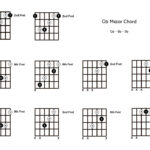The Acoustic Guitar is celebrated for its naturally rich and resonant sound, a quality achieved without electronic amplification. Unlike its electric counterpart, the acoustic guitar relies entirely on its physical design to amplify the vibrations of its strings into audible music. Central to this process is the acoustic soundboard, typically the guitar’s top, which acts as a diaphragm to project sound into the surrounding air.
The Mechanics of Acoustic Sound
When a string on an acoustic guitar is plucked or strummed, its vibrational energy is transmitted through the bridge to the soundboard. This soundboard, constructed from carefully selected tonewoods such as spruce, cedar, or mahogany, is designed to vibrate efficiently. The wood’s inherent resonant properties, combined with internal bracing patterns, allow the soundboard to move a much larger volume of air than the string alone could. This movement of air is what we perceive as sound.
The hollow body of the acoustic guitar plays a crucial secondary role. It acts as a resonating chamber, amplifying and enriching the sound, particularly in the bass frequencies. This resonance contributes to the depth and fullness of the acoustic guitar’s tone. The specific combination of tonewoods used for the soundboard, back, and sides, along with bracing techniques and bridge design, are fundamental factors that determine the unique tonal characteristics of different acoustic guitars. These elements work together to create a complex mixture of harmonics, giving each instrument its distinctive voice.
Exploring Types of Acoustic Guitars
Acoustic guitars broadly divide into two main categories: steel-string guitars and classical guitars.
Steel-String Acoustic Guitars
The steel-string acoustic guitar represents a modern evolution, diverging from the classical guitar lineage by incorporating steel strings. This change to steel strings results in a brighter and louder sound, making them popular across numerous contemporary music genres. The dreadnought body shape, pioneered by C.F. Martin & Company, is arguably the most iconic steel-string design. Characterized by a deep soundbox and a less pronounced upper bout, the dreadnought is known for its powerful volume and projection. Beyond the dreadnought, other body styles like the larger jumbo, the mid-sized auditorium (000), and the smaller grand concert (00) each offer distinct tonal and ergonomic variations to suit different playing styles and sonic preferences.
Classical Guitars
Classical guitars are rooted in the Spanish guitar tradition and are distinguished by their use of nylon strings instead of steel. This fundamental difference in string material imparts a warmer, mellower, and more delicate tone compared to steel-string guitars. Classical guitars are traditionally constructed with a wider neck and are played using fingerstyle techniques, rather than with a pick. While variations exist in shape, construction materials, and bracing, classical guitars generally adhere to either a modern classical shape or draw inspiration from historical designs, such as early romantic guitars.
Conclusion
The acoustic guitar’s enchanting sound is a testament to its ingenious design principles. The interplay between the vibrating soundboard and the resonating body is key to transforming string vibrations into the music we hear. Whether appreciating the bright, projecting tones of a steel-string or the warm, nuanced voice of a classical guitar, understanding how these instruments work enhances our appreciation for their timeless appeal.

